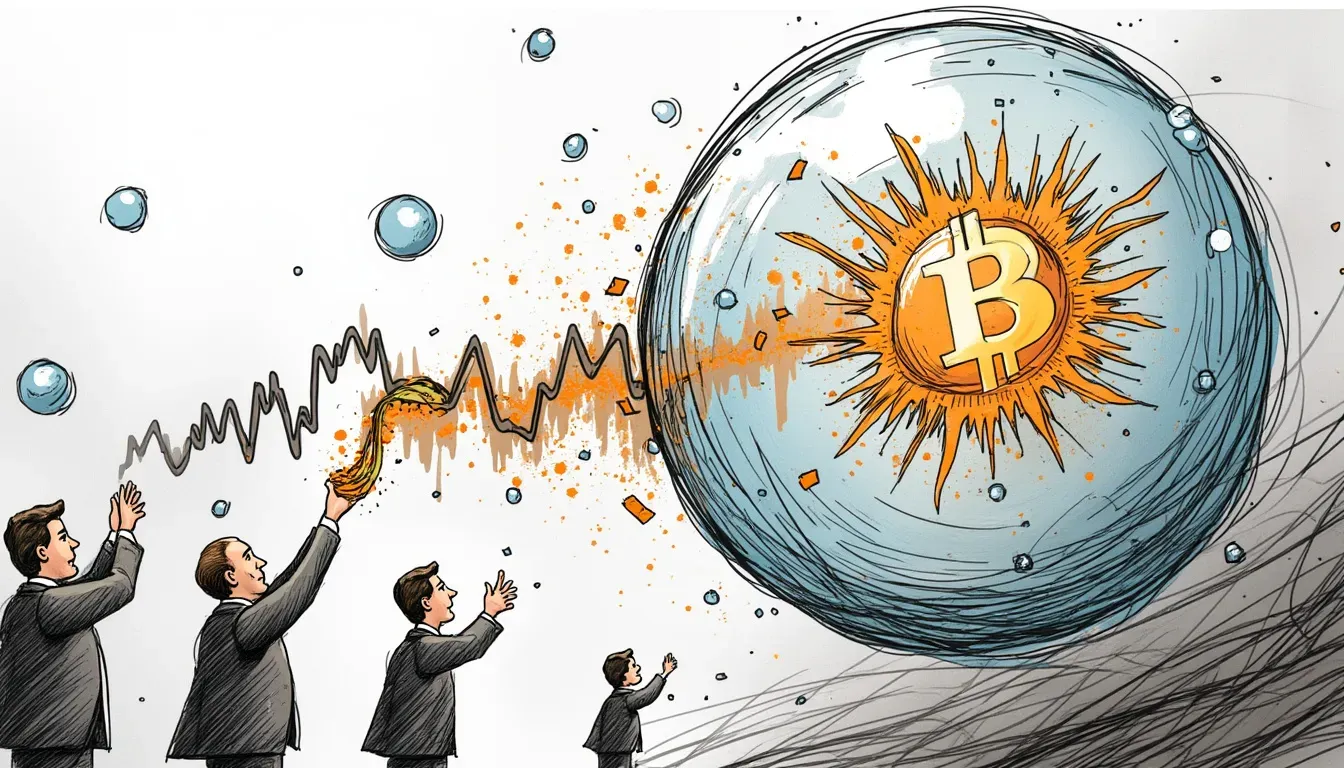Introduction
"A bubble isn't best defined by numbers, but instead by investor psychology." — Howard Marks
Market bubbles have long fascinated analysts, investors, and economists alike. A market bubble, unlike what many might imagine with a simple financial chart skyrocketing, is steeped in complex investor psychology. As Howard Marks elucidates, understanding bubbles requires delving into the emotions and mindsets that catapult both prices and sentiment to unsustainable heights.
The Anatomy of a Bubble
Investor Psychology Over Charts
While a steep upward trajectory on a financial chart certainly signals a bubble, it doesn't encapsulate the full essence of one. To truly comprehend a bubble, it's necessary to recognize both the price elevations and the temporary mania at play. It’s a combination of numbers and psychology.
"A bubble is really a temporary mania." — Howard Marks
The Role of FOMO
Fear of Missing Out (FOMO)
One prominent psychological element in bubbles is FOMO, the fear of missing out. As Charles Kindleberger famously noted, "There’s nothing so disturbing to one’s well-being as seeing a friend get rich." Witnessing others' success can unhinge even the most rational individuals, shifting their focus from aversion to risk, which traditionally polices markets and maintains sanity, to reckless, excessive risk-taking.
Policing the Market
- In normal conditions, risk-averse investors act as market "police," maintaining prudence.
- During bubbles, this vigilance wanes, leading to overly risk-tolerant behaviors.
Buffett's adage encapsulates this shift: "The less prudence with which others conduct their affairs, the greater the prudence with which we must conduct our own affairs." When FOMO overtakes the fear of loss, the rational process of evaluating investment worth is overshadowed by a desire to join the crowd.
The Influence of New and Unknown Elements
Excitement Over New Frontiers
Bubbles often center around fresh, unprecedented ideas or innovations. When investors encounter something new and unexplored, like a groundbreaking technology, there's no historical benchmark to indicate its rational pricing, making it susceptible to irrational exuberance.
Historical Examples
- The Tulip Craze (1630s Holland)
- The South Sea Bubble (1720s England)
- The Nifty Fifty (1960s USA)
These episodes demonstrate how novel ideas or sectors attract frenzied speculation lacking any concrete historical data to ground rational decision-making.
The Icarus Effect and "No Price Too High"
During the Nifty Fifty era, Marks recalls a dominant belief: "There’s no price too high for such a great company." Such sentiments signal the abandonment of analytical rigor, marking a key characteristic of bubble mentality.
Evaluating Great Companies
- When buying high-valued stocks, investors often assume constant future leadership, ignoring historical examples that show incumbent challenges:
- Industry dynamics change.
- New tech can disrupt.
- Competitors innovate.
This misplaced faith often leads to overpaying for assets, abandoning critical evaluation and price-worth consideration.
Staying Grounded in the Face of Bubbles
The Bargain Hunter’s Mindset
Oaktree’s strategy as "bargain hunters" serves as a poignant reminder that successful investing requires discipline and prudence during periods of market over-enthusiasm.
Maintaining Caution and Discipline
- Avoid Overcommitment: Preserve resources to capitalize on post-bubble opportunities.
- Resist Bandwagon Pressure: Uphold rigorous standards even as others relax theirs.
- Adopt "Uncomfortably Idiosyncratic" Positions: As emphasized by Dave Swensen, maintaining independent judgment amidst collective folly is key.
"To be a great investor... you have to have the strength to avoid doing what others are doing when it is ill-founded." — Howard Marks
Recognizing Different Bubble Types
Equity vs. Credit Bubbles
While the equity market is often the poster child for bubbles, similar patterns can occur in lending markets. Here, the "race to the bottom" reflects competitive diminution in lending standards, risking the overall market.
Credit Bubble Characteristics
- Lower interest rates.
- Weaker loan covenants.
- Higher leverage and inadequate safety measures.
Concluding Thoughts: A Call for Strategic Asset Allocation
A thoughtful approach to asset allocation, considering one's risk posture and the market cycle, is crucial for navigating bubbles. As Howard Marks advises, align your investment choices with your objectives, balancing ownership and lending appropriately.
Analyzing Market Conditions
- Avoid trend following.
- Base decisions on analytical insights, not emotions.
In doing so, investors can protect their portfolios from the volatile, irrational swings that bubbles often bring. As Marks cautions, a bubble teaches us that while the potential for profit is real, so too is the potential for perilous loss.
Oaktree recognizes the importance of staying informed and disciplined, continuously educating investors through resources like the Memo Series, accessible on their website.
EQUITY MARKETS, FOMO, YOUTUBE, HOWARD MARKS, INVESTOR PSYCHOLOGY, ASSET ALLOCATION, MARKET BUBBLES, CREDIT BUBBLES

